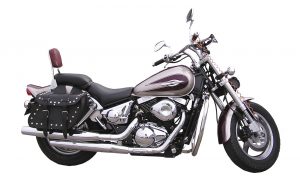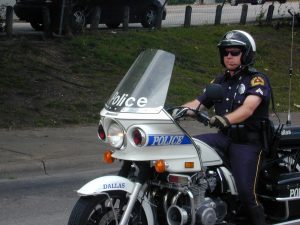 The Appeals Court affirmed the dismissal of the complaint charging the defendant with operating a motor vehicle while under the influence of intoxicating liquor (OUI-liquor) in Commonwealth v. Werra. The Court’s decision rested on the fact that the police citation for that offense “was not issued contemporaneously with the incident from which it arose” and did not “fall[] into the third exception of the so-called ‘no-fix’ statute, G.L. c.90C, §2.”
The Appeals Court affirmed the dismissal of the complaint charging the defendant with operating a motor vehicle while under the influence of intoxicating liquor (OUI-liquor) in Commonwealth v. Werra. The Court’s decision rested on the fact that the police citation for that offense “was not issued contemporaneously with the incident from which it arose” and did not “fall[] into the third exception of the so-called ‘no-fix’ statute, G.L. c.90C, §2.”
The background was as follows. On July 22, 2015, state trooper Donahue responded to a dispatch indicating that a green Ford Explorer travelling southbound on Route 3 “was being driven erratically…. [Donohue] saw the Explorer traveling in the breakdown lane. He pulled behind the vehicle and activated his cruiser’s emergency lights, but the driver, subsequently identified as the defendant, did not stop” until Donahue “drove in front of the Explorer” and blocked it. The defendant “seemed disoriented.” “When the trooper … asked her to identify herself, her speech was slurred” and she was unable to spell her name or state her date of birth. “Eventually the defendant clarified that she had taken methadone earlier that morning. Emergency medical services arrived and took the defendant to a hospital. An inventory search of the Explorer subsequently revealed a cup in the center console containing a clear liquid with a strong odor of an alcoholic beverage. That same day, … Donahue wrote a citation for operating a motor vehicle under the influence of drugs (OUI-drugs) … and other infractions.” “On August 5, 2015, a complaint issued charging the defendant with the offenses listed on the citation…. Only on March 16, 2016, over eight months after the incident, did the Commonwealth file a motion pursuant to Mass. R. Crim. P. 17 … for a summons of the defendant’s hospital records, which was allowed. The … records … indicated that on the afternoon of the alleged incident the defendant’s blood alcohol content was .25 percent, over three times the legal limit…. The case was scheduled for trial on October 13, 2016.” The day before that date, “five months after the medical records were received by the clerk’s office, and almost sixteen months after the incident, the State Police applied for a complaint against the defendant for OUI-liquor. The application included the same police report completed by … Donahue on July 29, 2015, along with … the defendant’s medical records. The application also included a new citation for OUI-liquor dated October 12, 2016. This citation issued more than one year and three months after the traffic incident occurred.” The next day, “the OUI-drugs charge was dismissed at the request of the Commonwealth. A new complaint alleging OUI-liquor, was issued on January 25, 2017. On July 14, 2017, … the motion judge heard the defendant’s motion to dismiss the complaint pursuant to the no-fix statute, G.L. c.90C, §2. That motion was allowed” and the Commonwealth appealed. Continue reading →
 Massachusetts Criminal Lawyer Blog
Massachusetts Criminal Lawyer Blog







